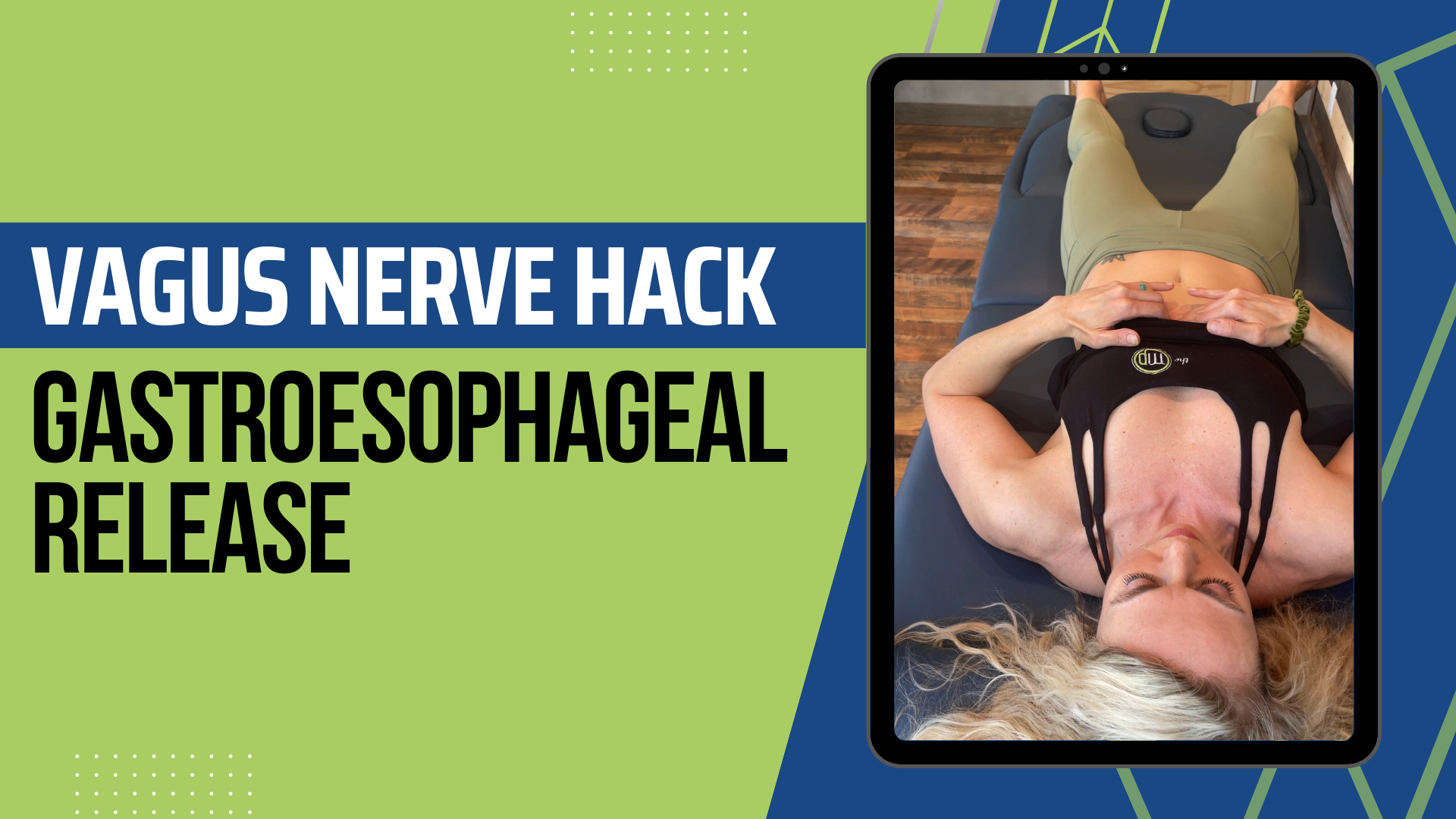Do you suffer from acid reflux, and you’re trying to figure out how to manage your condition? Many factors go into this, but today’s focus is on a visceral release for your gastroesophageal junction that may, in fact, help relieve your symptoms.
Rather watch or listen?
It’s important to remember that when we are in a stressed state, we have blood flow that’s moving away from the digestive tract. To be able to digest optimally, we have to be in a parasympathetic state, i.e., rest and digest.
Stimulating the vagus nerve via the digestive tract by performing visceral releases can be a great way to manage and treat your condition.
The gastroesophageal junction connects the esophagus to the stomach. The esophagus, stomach, and the rest of the digestive tract are innervated by the vagus nerve. This junction itself regulates the food and fluid that is moving from the esophagus to the stomach. This is a very important function because this is one of the things that can contribute to acid reflux. From an anatomical perspective, the esophagus passes right through the diaphragm. As you’re performing the exercise, diaphragmatic breathing is very important before, during, and after to be able to calm the nervous system down and optimize esophageal mobility. If the diaphragm is restricted, then that means it could compress the esophagus as well.
To perform this technique:
- To find the location, move down the sternum and under the xiphoid process. Perform this exercise lying down and while you gently press into the tissue. You might already feel some tenderness, which is quite common and normal.
- Once you’ve assessed the tissue, then traction the tissue down and to your left towards the stomach. Once you’re there, perform your diaphragmatic breathing. As you inhale, you’re creating resistance against the tissue. As you exhale, move down and out while tractioning the tissue more. Perform this until you feel a release or until the tissue begins to feel more relaxed. You might also have another response in your nervous system, such as a sigh, swallow, or yawn. However, you will feel the tissue relax and feel not as tender. Those are all positive signs that you’re performing the technique properly.
- Perform this in-between meals. You don’t want to do it immediately before or after a meal. You can perform this exercise right before bed or in the morning.
Make sure you speak to a medical provider if you are dealing with a chronic condition to make sure this is an appropriate technique for you. Always be gentle and intentional, and never aggressive.
Please make sure to check out all of our other vagus nerve hacks that can help you optimize your health and longevity. Make sure to give this a share and subscribe to our YouTube channel, The Movement Paradigm for weekly tips on mindset, nutrition, and movement.
Ancient Navel Massage Practices

